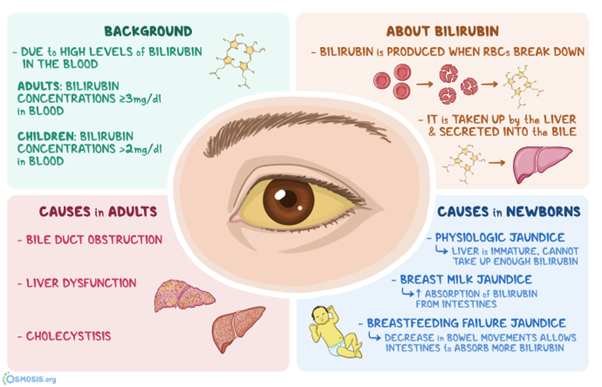A nurse is evaluating the laboratory values of a client who is receiving epoetin alfa. Which of the following findings indicates a therapeutic response to the medication?
Increased haemoglobin level
Increased platelet count
Increased neutrophil count
Increased erythrocyte sedimentation rate
The Correct Answer is A
Choice A reason:
Increased haemoglobin is correct. level Epoetin alfa is a medication used to stimulate the production of red blood cells in the bone marrow, and it is often prescribed to treat anaemia. Anaemia is characterized by a decrease in the number of red blood cells or a decrease in the amount of haemoglobin, which is responsible for carrying oxygen in the blood.
The therapeutic response to epoetin alfa is an increase in the haemoglobin level. This indicates that the medication is effectively stimulating the production of red blood cells, leading to an improvement in the client's anaemia and overall oxygen-carrying capacity of the blood.
Choice B reason:
Increased platelet count: Platelets are involved in blood clotting and are not directly affected by epoetin alfa.
Choice C reason:
Increased neutrophil count: Neutrophils are a type of white blood cell involved in the body's immune response. Epoetin alfa primarily affects red blood cells and does not directly impact white blood cell levels.
Choice D reason:
Increased erythrocyte sedimentation rate (ESR): ESR is a non-specific indicator of inflammation in the body and is not directly related to the therapeutic response of epoetin alfa in treating anaemia.
Nursing Test Bank
Naxlex Comprehensive Predictor Exams
Related Questions
Correct Answer is D
Explanation
Choice A reason:
Face is incorrect: Facial skin colour can vary for many reasons, but it may not be the best indicator of jaundice in individuals with dark skin.
Choice B reason
Shoulders is incorrect: The shoulders are not typically indicative of jaundice.
Choice C reason:
Palm of the hands is incorrect: While the palm of the hands can sometimes show yellowing in cases of jaundice, it is less reliable than observing the sclera.
Choice D reason:
Sclera is the best location. In individuals with darker skin tones, yellowish discoloration of the skin due to jaundice can be more challenging to detect. However, the sclera of the eyes can still show noticeable yellowing, making it a reliable location for assessing jaundice in individuals with both light and dark skin.

Correct Answer is A
Explanation
Choice A reason:
The statement is correct because chickenpox is highly contagious, and visiting someone with active chickenpox can put the pregnant individual at risk of contracting the infection. The recommendation is to avoid contact with individuals who have chickenpox, especially during pregnancy. The correct approach is to stay away from the infected person until they are no longer contagious (which is usually after all the sores have crusted over and dried up).
Choice B reason:
The statement Is incorrect because taking antibiotics for a viral infection is not appropriate, as antibiotics are only effective against bacterial infections, not viruses. Using antibiotics inappropriately can lead to antibiotic resistance and other potential side effects. Viral infections are generally managed with supportive care.
Choice C reason:
The statement is incorrect because handwashing is an essential infection prevention measure, but washing hands for 10 seconds with hot water may not be sufficient to remove germs effectively. The recommended duration for handwashing is at least 20 seconds with soap and water.
Choice D reason:
The statement is incorrect because cleaning a cat's litter box during pregnancy is not recommended due to the potential risk of exposure to the parasite Toxoplasma gondii, which is found in cat faeces. Toxoplasmosis can cause serious health issues in the developing foetus. It is best for pregnant individuals to avoid cleaning the litter box and have someone else do it or wear gloves and wash hands thoroughly afterward if no one else can do it.
Whether you are a student looking to ace your exams or a practicing nurse seeking to enhance your expertise , our nursing education contents will empower you with the confidence and competence to make a difference in the lives of patients and become a respected leader in the healthcare field.
Visit Naxlex, invest in your future and unlock endless possibilities with our unparalleled nursing education contents today
Report Wrong Answer on the Current Question
Do you disagree with the answer? If yes, what is your expected answer? Explain.
Kindly be descriptive with the issue you are facing.
